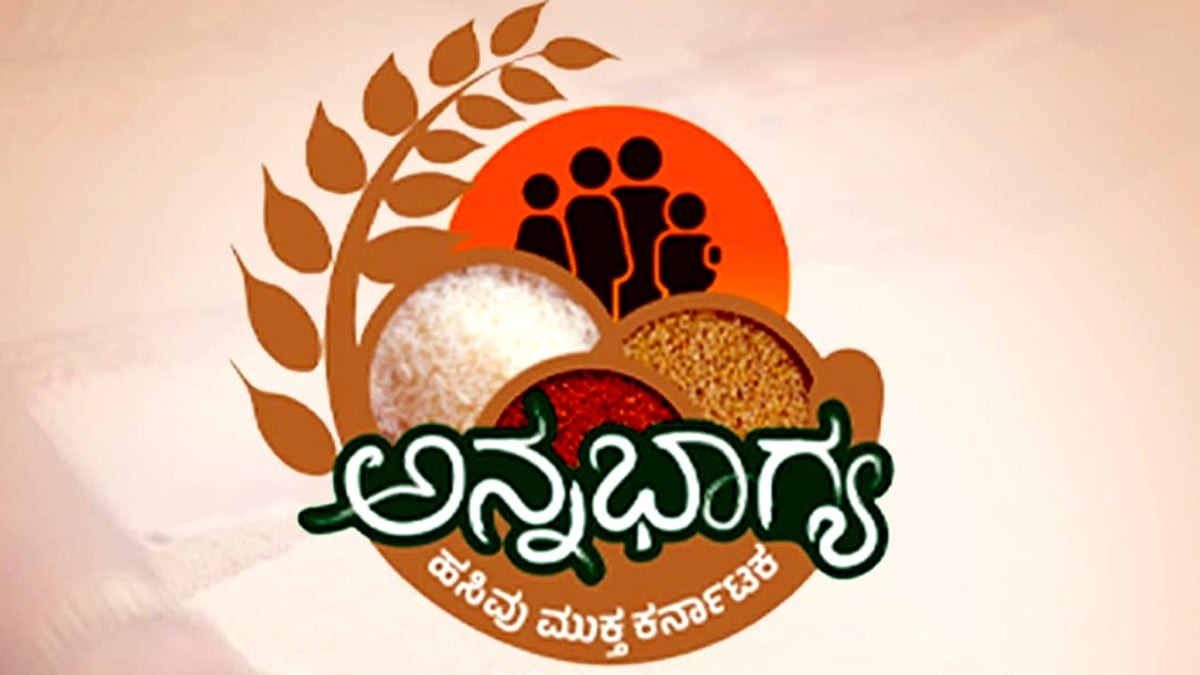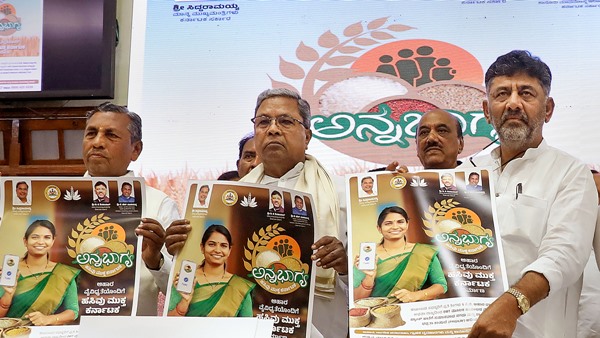In a significant policy shift aimed at improving nutritional support for beneficiaries, the Karnataka government has announced that the traditional five-kilogram rice allocation under the Anna Bhagya scheme will be replaced by the newly designed ‘Indira Food Kit.’ The initiative seeks to provide a more balanced and comprehensive package of essential food items, ensuring that low-income families receive both calories and nutrients necessary for a healthy diet. Officials stated that the Indira Food Kit is designed to cater to daily household needs while enhancing overall food security and reducing malnutrition among vulnerable populations.
Composition of the Indira Food Kit
The Indira Food Kit will include a combination of staples such as rice, pulses, edible oil, sugar, and fortified flour, alongside other nutrient-rich items like dried legumes and fortified salt. The objective is to provide a well-rounded diet that supports energy requirements, protein intake, and micronutrient consumption. Unlike the previous allocation, which focused solely on rice, the Indira Food Kit emphasizes dietary diversity, nutritional adequacy, and practical utility for families, especially those with children and elderly members. Distribution centers across the state will manage the packaging and delivery of these kits efficiently.
Implementation strategy and benefits
The Karnataka Food and Civil Supplies Department will oversee the distribution of Indira Food Kits, leveraging the existing Public Distribution System (PDS) network. Beneficiaries will continue to receive their entitlements at designated ration shops, with government officials ensuring timely delivery and quality control. By providing a combination of food items rather than a single staple, the scheme aims to improve household nutrition, address deficiencies, and promote healthier eating habits. Officials believe the initiative will have a direct impact on reducing malnutrition and ensuring food security for marginalized communities.
The introduction of the Indira Food Kit also allows the state to streamline procurement and inventory management. By standardizing the kit components, authorities can negotiate bulk purchases, maintain consistent quality, and minimize wastage. Monitoring mechanisms, including regular audits and feedback systems, are being implemented to ensure that kits reach intended beneficiaries in a transparent and efficient manner. The government has stressed the importance of timely delivery, especially during festival periods and seasons of high demand.
Nutrition experts have welcomed the move, noting that combining rice with pulses, oil, and other fortified items provides a more balanced diet, particularly for children and pregnant women. Fortified flour and salt contribute to addressing micronutrient deficiencies such as iron and iodine deficiency, which are prevalent in rural and semi-urban areas. The Indira Food Kit is expected to improve overall health outcomes and reduce incidences of malnutrition-related illnesses among vulnerable populations.

Distribution and public awareness
Public awareness campaigns will accompany the rollout of the Indira Food Kit. Beneficiaries will be informed about the contents, usage, and benefits of the kit through pamphlets, community meetings, and digital platforms. Demonstrations on preparing nutritious meals using the kit will be conducted at village and urban community centers, ensuring that families can maximize the health benefits of the allocated food items. Authorities aim to foster informed consumption habits among beneficiaries.
The government has coordinated with local NGOs and community organizations to facilitate smooth implementation. Volunteers and social workers will assist in managing distribution centers, verifying beneficiary details, and resolving grievances. Special attention will be given to remote and marginalized communities to ensure that no eligible household is left out of the program. Officials emphasized the importance of equitable access across all districts.
Financial planning and budgeting for the Indira Food Kit program have been integrated with existing allocations under the Anna Bhagya scheme. The state government has committed additional funds to support procurement, transportation, and packaging, ensuring that quality standards are maintained. Authorities have also outlined measures to monitor cost efficiency and avoid potential leakages in the supply chain.
The Indira Food Kit initiative aligns with broader national objectives of improving food security and nutrition among vulnerable populations. By incorporating fortified and diverse food items, Karnataka is setting a benchmark for innovative welfare programs that address both hunger and nutritional deficiencies. This initiative is expected to serve as a model for other states seeking to improve the efficacy of public distribution systems.
Community leaders and beneficiaries have expressed optimism regarding the new initiative. Many see the Indira Food Kit as a step forward in ensuring that food support goes beyond mere calorie provision, delivering essential nutrients necessary for maintaining health and wellbeing. Early pilot programs in selected districts have reported positive feedback from households regarding usability and content variety.
The shift from a single staple to a diversified food kit is expected to have long-term benefits for children’s growth, maternal health, and general household nutrition. By providing key food items in balanced proportions, the program encourages healthier meal planning and reduces the reliance on market purchases for essential nutrition, thereby supporting household economies.
Officials have also emphasized transparency in distribution, using digital verification methods such as QR codes and beneficiary tracking systems. These mechanisms are intended to prevent duplication, fraud, and diversion of food items, ensuring that the Indira Food Kits reach intended recipients promptly. Grievance redressal mechanisms are in place for beneficiaries to report issues or discrepancies.
The Indira Food Kit program is expected to complement other government welfare initiatives, including mid-day meal schemes in schools and maternal health programs. By ensuring that households have access to a balanced diet, the scheme indirectly supports children’s education and health outcomes, enhancing the overall effectiveness of state welfare interventions.
Training programs for ration shop owners and PDS staff are being conducted to familiarize them with the new kit components, packaging protocols, and distribution schedules. Officials emphasize proper handling of perishable items and maintenance of hygiene standards to ensure food safety for beneficiaries.
The Karnataka government has set targets for the rapid rollout of Indira Food Kits, prioritizing districts with high poverty and malnutrition rates. Officials are optimistic that the initiative will create measurable improvements in nutrition indicators within the first year of implementation. Continuous monitoring and feedback will inform adjustments and scaling strategies.
By replacing the five-kilogram rice allocation with the Indira Food Kit, Karnataka aims to enhance food security while promoting nutrition-sensitive welfare programs. Authorities emphasize that this initiative reflects the government’s commitment to improving the quality of life for vulnerable populations and addressing malnutrition through innovative and practical solutions.
In conclusion, the Indira Food Kit under the Anna Bhagya scheme represents a transformative approach to public food distribution. With its focus on balanced nutrition, transparent distribution, and community engagement, the program is poised to benefit millions of families, improve health outcomes, and set an example for other states looking to modernize and enhance welfare schemes for food security.
The Indira Food Kit initiative marks a significant step forward in Karnataka’s welfare policies, aiming to provide not just calories but balanced nutrition to vulnerable households. By replacing the standard five-kilogram rice allocation under the Anna Bhagya scheme, the government is addressing the broader dietary needs of low-income families. The kit combines staples such as rice, pulses, and oil with fortified items like flour and salt, ensuring that families receive essential nutrients. Officials believe that by improving nutrition, the program will directly impact health outcomes, particularly for children, pregnant women, and the elderly.

Distribution of the Indira Food Kit will leverage the existing Public Distribution System (PDS) infrastructure. Ration shops across districts will serve as the primary delivery points, with local authorities coordinating logistics to ensure timely availability. Beneficiaries will receive monthly allocations, with the government emphasizing proper packaging and hygiene standards. Officials have also planned audits and monitoring mechanisms to prevent pilferage or diversion of supplies, aiming for transparency and efficiency in the rollout of the program.
The kit’s composition has been carefully designed to ensure a balance of carbohydrates, proteins, and micronutrients. Pulses provide essential proteins, while fortified flour and salt address deficiencies in iron and iodine. Edible oil included in the kit ensures adequate caloric intake, while sugar offers energy and taste balance. This diversified approach contrasts with the previous scheme, which focused primarily on rice, thereby limiting nutritional benefits. Nutritionists have praised the initiative for its potential to address both macro- and micronutrient deficiencies.
Beneficiary awareness is a key component of the Indira Food Kit program. The government plans to conduct workshops, community meetings, and digital campaigns to educate families on how to prepare balanced meals using kit components. Special attention will be given to demonstrating easy-to-make recipes for children and elderly members. By providing practical knowledge alongside food distribution, officials hope to maximize the health impact of the program and encourage long-term adoption of healthy eating habits.
Coordination with NGOs and community organizations will play a significant role in the program’s implementation. Volunteers will assist with distribution, verification of beneficiaries, and grievance redressal. This community-based approach ensures that even households in remote or underserved areas receive timely and equitable access to the Indira Food Kits. Officials have stressed that no eligible family will be left out, with priority given to districts with high poverty and malnutrition rates.
Financial planning for the program has been meticulously outlined. The state government has allocated additional funds to cover procurement, packaging, transportation, and quality control. Bulk procurement and standardized kit components are expected to reduce costs and enhance efficiency. Officials also highlighted that digital tracking and beneficiary verification systems will minimize leakage and ensure that funds are utilized optimally.
The government emphasizes that the program is aligned with broader objectives of food security and nutritional welfare. By combining staples with fortified foods, the Indira Food Kit directly supports children’s growth, maternal health, and household well-being. The initiative also complements mid-day meal programs in schools, as improved nutrition at home contributes to better health and educational outcomes for children.

Training of ration shop owners and PDS staff is underway to ensure smooth implementation. Staff members are being briefed on kit composition, packaging, storage requirements, and distribution schedules. Emphasis is placed on hygiene, safe handling, and proper documentation to maintain the quality and integrity of the Indira Food Kits. Officials noted that effective training is crucial for the success of the program.
Follow: Karnataka Government
Also read: Home | Channel 6 Network – Latest News, Breaking Updates: Politics, Business, Tech & More

